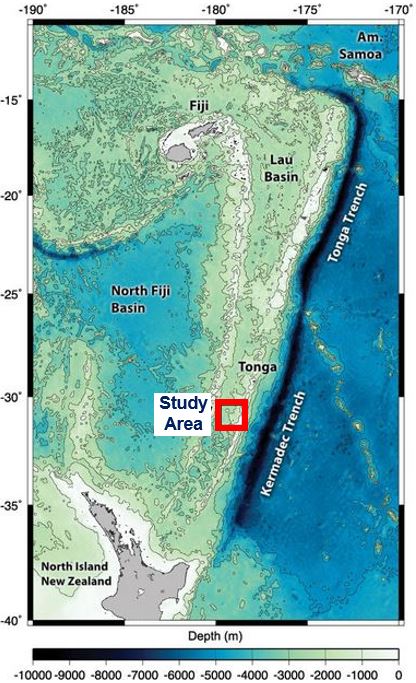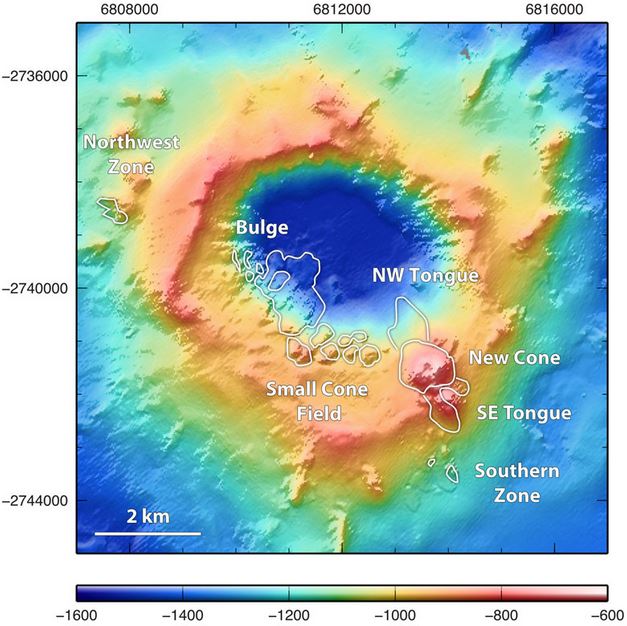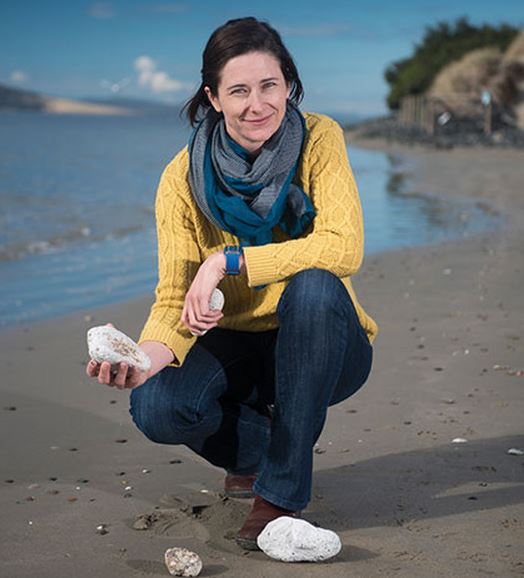An international team of scientists is about to board a ship carrying two underwater robots called ‘Sentry’ and ‘Jason’ to learn more about a massive volcano on the seabed that is producing tonnes of pumice that is being washed up on the beaches of New Zealand and Australia.
When big pieces of pumice – a light, porous volcanic rock formed when a gas-rich froth of glassy lava solidifies rapidly – began washing up on the beaches of Tasmania, Dr. Rebecca Carey, a volcanologist who works at the School of Earth Sciences and CODES, University of Tasmania, knew exactly where they were coming from – the massive underwater Havre volcano in the Kermadec region approximately 1,000km (621 miles) north of Auckland.
The pumice, which had been travelling the ocean for over a year, was being tracked by Dr. Carey.

The Kermadec region is a volcanically active and tectonically complex plate boundary system extending from New Zealand’s North Island to Samoa. (Image: Woods Hole Oceanographic Institution)
Dr. Carey is about to travel to the volcano aboard US ship Roger Revelle with researchers and PhD students from five different countries to learn more about the eruption.
Dr. Carey, one of two Australians on the trip, will be Co-Chief Scientist of the Mapping Exploration and Sampling at Havre (MESH).
Two robots will help in the study
The team will use two robots to learn more about the Havre volcanic eruption: An autonomous underwater vehicle called ‘Sentry’, and a remotely operated vehicle dubbed ‘Jason’.
Sentry can take digital photographs of deep-sea terrain and is equipped with sonars. With Jason, the scientists will have access to the seafloor while remaining on the ship. It will gather samples of marine life, sediment and rock, and transmit images and video.
This is the voyage of a new frontier – the sea floor – said Dr. Carey.
Dr. Carey added:
“That is exciting in itself, but the Havre eruption is very interesting in that it challenges current controversies in submarine volcanism.”
“For example, theory predicts eruptions of this magma type should not be explosive at about a 1000 metres below sea level. This eruption was sourced from multiple vents that extend maybe as deep at 1600 metres but as shallow as 900 metres- so this eruption is contradicting that theory.”

Havre is 640 and 900 meters below sea level (250 meters high). It is 1.2 kilometers across, and has a summit crater 120 meters in diameter. (Image: Woods Hole Oceanographic Institution)
The researchers also want to gain a better understanding of the role water plays in the volcano’s eruptions.
Dr Carey explained:
“When the gas and pumice come out of the volcano’s vents, what is the role of water in transporting pumice to the sea surface? Or back down to the sea floor to form dense flows of pumice?”
“We are also interested in how those pumice particles are transported once they leave the vent.”

Dr. Carey holding a pumice stone that was washed up on the beach in Tasmania. (Image: University of Tasmania)
Schoolchildren and students will benefit
The voyage, which is supported by the Bookend Trust, has considerable educational value, Dr. Carey pointed out.
“We have a website which will report our activities and findings in real time, by posting photos of everyday life on the ship and videos of the footage the robots recover.”
“School children are encouraged to follow our voyage online and they will be able to ask the scientists questions.”
When the research voyage is complete, there will be an educational program based on the trip and what has been discovered, Dr. Cary explained “allowing schoolchildren to learn all about volcanology and global plate tectonics through the exciting lesson plans.”
